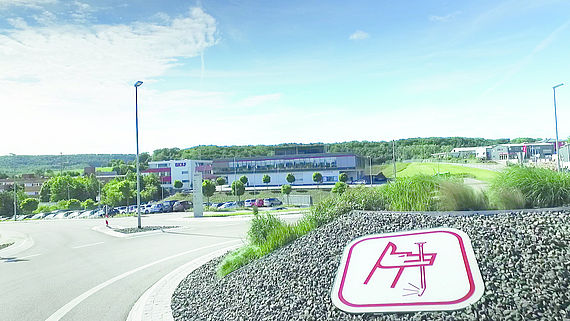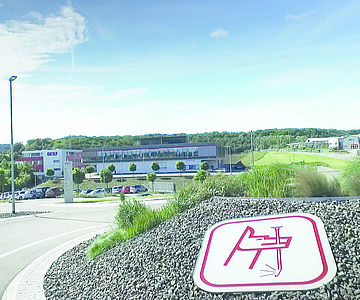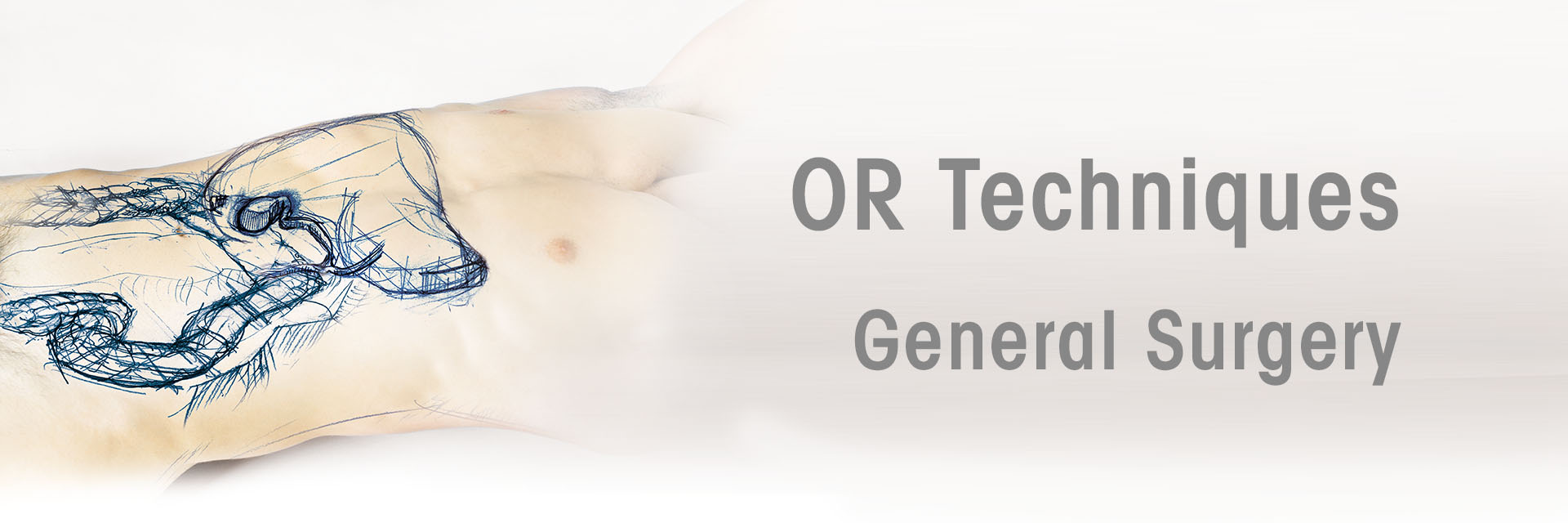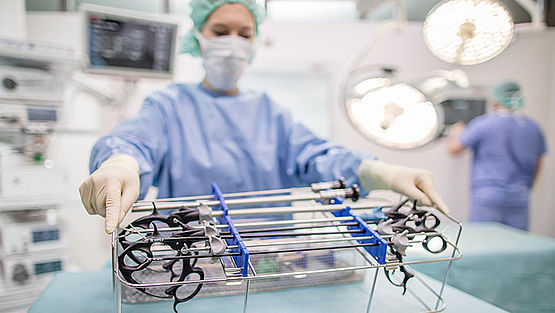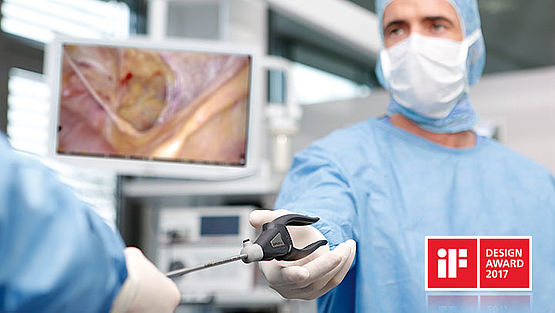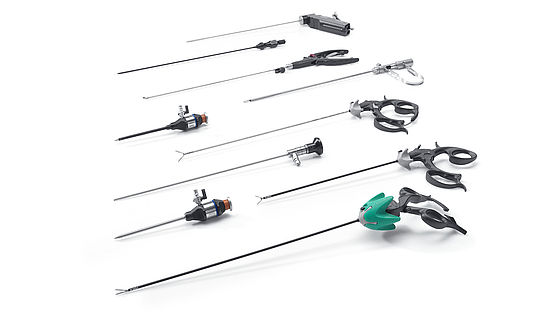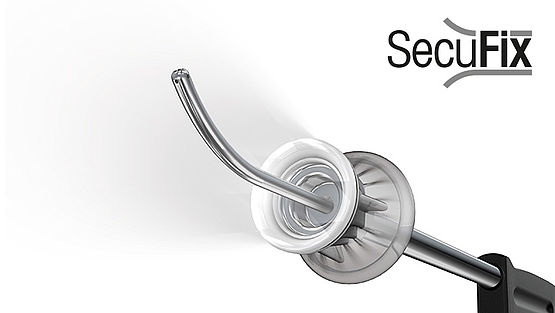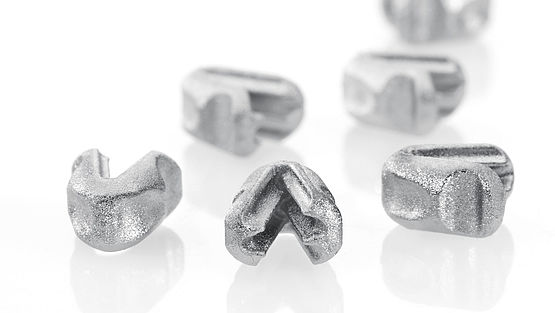Surgical techniques
Minimally invasive surgery (MIS), or laparoscopic surgery, is a technique applied in visceral surgery and allows interventions below the abdominal cavities by means of an optical instrument. It is used to create diagnoses and carry out certain operations and is now an established surgical procedure.
The success of an operation or treatment hinges on both the surgeon's skill and having the right set of instruments. Minimally invasive surgery has become an established technique in recent years and has made tremendous medical progress.

Laparoscopic Surgery, also known as keyhole surgery, comprises safe established and minimally invasive that have replaced numerous open surgical operations. These procedures reduce trauma and wound healing disorders and are therefore seen as patient-friendly. This advanced technology permits a broad range of laparoscopic operations, from standard interventions, such as cholecystectomy, appendectomy or inguinal hernia, through to advanced interventions such as laparoscopic rectal resections, as well as the laparoscopic gastric bypass or sleeve in the field of bariatric surgery.
Products for this technique

The trend towards increasing patient-friendly operating procedures is creating a higher demand for instruments with minimized diameters. This is where minilaparoscopy offers the cosmetic advantages of NOTES or the single-port technique, without the associated drawbacks and risks presented by complex operating procedures and long learning curves. An interdisciplinary procedure that can be used in laparoscopic surgery, gynecology and urology.
Interventions with a small outer diameter of just 3.5 mm and the use of suitable instruments leave only the smallest, barely visible scars. The trauma of the surgery is likewise minimized, and this can significantly shorten the patient's hospital stay. It is also repeated that patients feel less pain. Surgeons can simply perform their familiar technique using narrower diameter instruments.
The successful ERAGONmodular concept was used as a basis to develop a new generation of three-part modular 3.5 mm instruments that also satisfy the toughest standards in hygiene and application technology. These instruments are used in both adult and pediatric surgery.
Minilaparoscopy, an ingenious and contemporary surgical procedure, is already an established standard in the fields of cholecystectomy and appendectomy.
Products for this technique
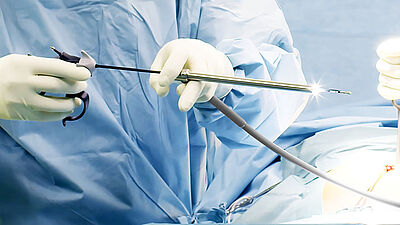
The E/MILOS operation (mini or less-open sublay) describes the successful concept by Wolfgang Reinpold MD, Director of Surgery of the Wilhelmsburger Hospital Groß-Sand in Hamburg, to treat almost all ventral and incisional hernias. This technique is a concept of transhernial total extraperitoneal plastic mesh implantation. By having direct or endoscopic vision, the operation starts in “mini-open technique” with a minimally invasive skin incision of two to six centimetres for the exposure of the hernia sac. With transhernial gas endoscopy following the preparation of an extraperitoneal space measuring at least six to eight centimeters and closure of the peritoneum. The endoscopic light tube EndoTORCH enables optimal light conditions for the best possible overview during the preparation of the hernia sac. This light tube was specifically developed for the E/MILOS in cooperation with Wolfgang Reinpold MD.
To minimize the access trauma even further for suitable patients the mini E/MILOS technique was developed. In slim patients with small to medium-sized ventral hernias and high cosmetic standards, E/MILOS surgery can be performed via a two centimeter transhernial access using 3.5 mm instruments and working trocars instead of standard 5 mm instrumentation.
If you want to see the video or read more about E/MILOSoperation, register or log in.
Log in now Register now
Product for this technique

Die E/MILOS-Operation (Mini or Less open Sublay Technik) beschreibt das Erfolgskonzept zur Versorgung von Bauchwand- und Narbenhernien nach Dr. Reinpold, Chefarzt Chirurgie im Wilhelmsburger Krankenhause Groß-Sand in Hamburg. Diese Operationstechnik ist ein Verfahren zur transhernialen, total extraperitonealer Kunststoff-Netz Implantation. Zunächst wird „mini-offen“ mit einem zwei bis sechs Zentimeter langen Hautschnitt unter direkter oder endoskopischer Sicht (endoskopisch assistiert) der Bruchsack frei präpariert. Anschließend erfolgt die Präparation eines sechs bis acht Zentimeter großen, extraperitonealen Raumes unter transhernialer Gasendoskopie und Verschluss des Peritoneums. Für perfekte Sichtverhältnisse während der Präparation des Bruchsackes sorgt das endoskopische Lichtrohr EndoTORCH. Dieser wurde speziell für die E/MILOS in Zusammenarbeit mit Dr. Reinpold entwickelt.
Zur weiteren Minimierung des Zugangstraumas wurde für geeignete Patienten die Mini E/MILOS-Operationstechnik entwickelt. Hierbei wird nur noch ein zwei Zentimeter großer Schnitt für die mini offene Präparation und für den transhernialen Zugang werden – anstelle von Standard 5 mm Instrumentarium - 3,5 mm Instrumente und Arbeitstrokare verwendet. Schlanke Patienten mit einem hohen kosmetischen Anspruch profitieren hierbei oft von kaum sichtbaren Narben bei kleinen bis mittelgroßen Bauchwandhernien.
Wenn Sie das OP-Video sehen oder den Artikel dazu lesen möchten, dann loggen Sie sich ein oder regstrieren Sie sich jetzt.
Jetzt einloggen Jetzt registrieren
Produkte für diese Technik:
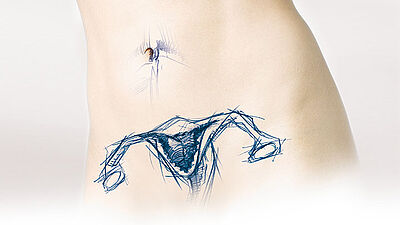
Gynecological laparoscopy is becoming an increasingly important field. The development of patient-friendly, minimally-invasive hysterectomy procedures and the associated beneficial surgical outcomes combined with significantly shorter periods of rehabilitation. This has led to interventions like hysterectomies being performed laparoscopically in many cases.
Operations performed in gynecological laparoscopy:
Hysterectomy
TLH (Total Laparoscopic Hysterectomy)
LASH (Laparoscopic Supracervical Hysterectomy)
LAVH (Laparoscopic Assisted Vaginal Hysterectomy)
Myomectomy
Ovarectomy
Salpingectomy
Urogynecology
Fertility surgery
Ectopic pregnancies
Endometriosis
Oncology
Products for this technique

Transanal Endoscopic Microsurgery (TEM) is used to treat diseases of the rectum. The generic term is colorectal surgery and includes operations on benign or malignant tumors. The operation can be performed using conventional or laparoscopic techniques.
Benign conditions that require intervention are often diverticular diseases. Diverticulitis is a disease of the colon, an inflammation caused by herniation of the mucosa. This often affects the colon sigmoideum (sigma diverticulitis – also referred to as "left-sided appendicitis"). Most operations on colon and rectum tumors can be performed laparoscopically. This depends on the size and location of the tumor and the surgeon's experience...
If you want to see the surgical video, register or log in.
Register now Log in now
Products for this technique

Pediatric surgery is an autonomous discipline of surgery and covers the area from newborn to teenager. Pediatric surgeons therefore have to be familiar with the particular characteristics and growth phases of their patients in relation to the age of each individual. Nowadays, minimally invasive techniques are naturally common practice in this area of medicine.
All areas of abdominal, thoracic and tumor surgery through to pediatric urology and orthopedics are covered. One focus in pediatric surgery relates to malformations. These diseases are generally not restricted to a single organ system and this is why pediatric surgeons rarely specialize in a single organ, as is the case in adult surgery. Pediatric surgeons base their operating techniques on adult surgery, although specific characteristics relating to the young age of their patients generally make it necessary to adopt a special procedure.
This means that particular specifications have to be observed for operating techniques and in the technical development of instrument sets in order to take account of the requirements of young patients. Pediatric surgeons therefore often adopt independent approaches.
Richard Wolf has also taken up this challenge and works together with experienced pediatric surgeons to develop specialized individual endoscopy systems and instruments tailored to this specialist area...
If you want to read something about new technique in for pediatric surgery, register or log in.
Register now Log in now
